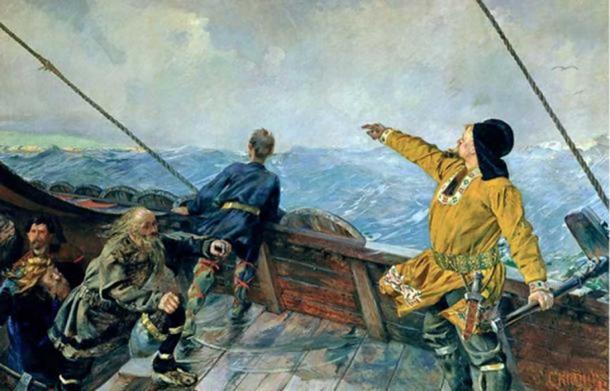
Mythical Viking Sunstone Used for Navigation was Real and Remarkably Accurate, New Study Shows
The Vikings have been reputed to be remarkable seafarers who could fearlessly navigate their way through unknown oceans to invade unsuspecting communities along the North Sea and Atlantic Sea coasts of Europe. A well-known ancient Norse myth describes a magical gem that could reveal the position of the sun when hidden behind clouds or even after sunset. A new study shows the sunstone was real and very accurate.
Several accounts in the ancient Nordic sagas speak of a sólarsteinn or “sunstone”, which they used to determine the sun’s position after sunset. For years, it was thought to be little more than a legend. But in 2010, a unique crystal was found in the wreck of an Elizabethan ship sunk off the coast of the Channel Islands. After three years of intensive study, scientists announced that the crystal made of a calcite substance could indeed act as a navigational aid.
According to those researchers, the principle behind the sunstone relies on its unusual property of creating a double refraction of sunlight, even when it is obscured by cloud or fog. By turning the crystal in front of the human eye until the darkness of the two shadows were equal, the sun's position can be pinpointed with remarkable accuracy.

The Vikings were known to be master seafarers. Leiv Eiriksson Discovers America by Christian Krohg, 1893 (public domain)
New Study Reveals Accuracy
Phys.org reports on a new study conducted by researchers from ELTE Eötvös Loránd University in Hungary, who ran computer simulations of 1000 voyages between Norway and Greenland with varying cloudiness, in order to determine how accurate the sunstone was in navigation.
“After inputting data describing such trips, the researchers ran the simulations multiple times over the course of two specific virtual days, the spring equinox and the summer solstice. They ran the trials for different types of crystals and with differing intervals between sunstone tests,” reported Phys.org.
The results of their study revealed that using a cordierite crystal for a minimum of every three hours was around 92.2 to 100 percent accurate.
“This explains why the Vikings could rule the Atlantic Ocean for 300 years and could reach North America without a magnetic compass,” the study authors wrote in the paper published by the Royal Society Open Science.
Sunstone was Used in Parallel to a Sun Compass
Researchers believe that they combined the power of the sunstone with that of a sun compass or ‘sundial’ to navigate their ships after dark.

Wooden fragment discovered in Uunartoq, Greenland, in 1948, which is believed to be a sun-compass used to determine direction. Image credit: Soren Thirslund.
Part of a Viking sun compass was unearthed in 1948 in a fjord in Uunartoq, Greeland, which was settled by Norse farmers in the 10 th century. Originally believed to be a household decoration, researchers later discovered that the lines engraved along the edge were for navigational purposes.
“The team found that at noon every day, when the sun is highest in the sky, a dial in the center of the compass would have cast a shadow between two lines on the plate,” reported Live Science in 2013. “The ancient seafarers could have measured the length of that noon shadow using scaling lines on the dial, and then determined the latitude.”
A scene from the Vikings (2013) History Channel Series demonstrates how the sundial was used.
Top image: A calcite crystal found on an Elizabethan ship believed to have helped the Vikings navigate the seas. Credit: The Natural History Museum.















Comments
Sunstones are made from calcite, and they have been found across the planet in areas that have high concentrations of basalt, which is formed through the cooling and solidification of magma. Since Iceland is the host of approximately 130 volcanoes, there are some good chances of finding them on this island. Sunstones are not just white, they can be found in all kinds of colors. https://nootropicsjet.com/
The oldest sunstone that could have been used for navigation was found amongst the wreckage of a warship called the Alderney which sank between England and France in 1592.